Florian Kohfeldt is another relatively young coach with current success in the Bundesliga. The head coach of Werder Bremen started his coaching career in the youth academy of the same club. From there, the 36-year-old – a Werder supporter since his childhood – made his way up to the head coach position. Moreover, Kohfeldt finished the UEFA Pro Level license with the best grades in 2015.
Besides the story lying beneath his success, Kohfeldt’s concepts are interesting too. He has established a dominant style of play in Bremen. The following analysis will explain some of his tactical tweaks at Werder Bremen.
Style of play and system
Similar to future RB Leipzig coach Julian Nagelsmann, Kohfeldt uses different systems to enable his side to execute their own style of play against the opposition.
The German coach often mentions that he wants his side to act “bravely” with and without the ball. The overall aim of the German coach is to play in a dominant way independent of the opposition. Controlling areas near the opposition goal and thereby creating more chances than their opponent is Bremen’s biggest objective.
Nevertheless, Kohfeldt likes to line up a single pivot behind two advanced midfielders. In general, Kohfeldt’s philosophy resembles of the typical Ajax style of play.
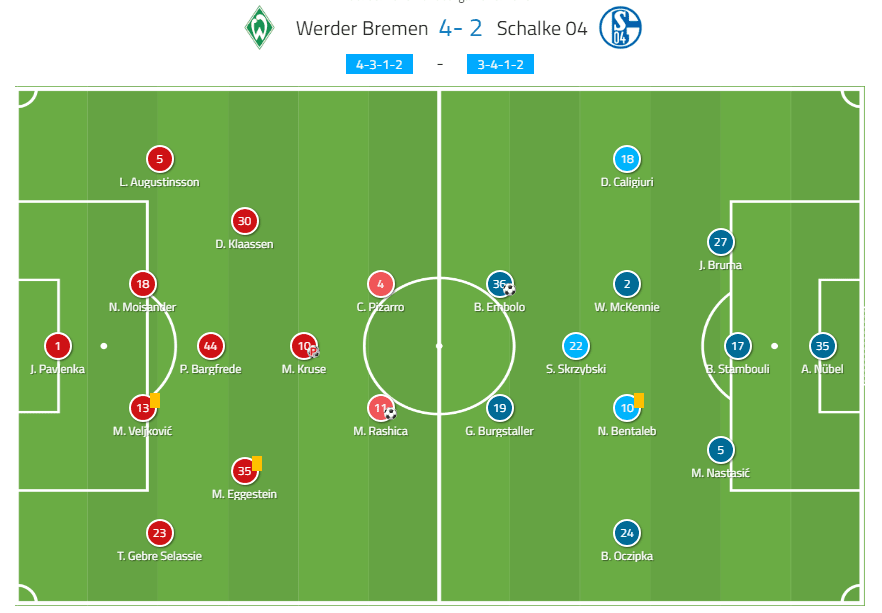
Although Kohfeldt prefers to deploy a line of four at the back, he occasionally switches to a back three. That way, Kohfeldt tries to ensure that his side is capable of executing their principles.
Furthermore, Kohfeldt adapts to his key personnel. Playmaker and captain Max Kruse, for instance, is an attacker who likes to drop into midfield and create chances for his teammates. In order to allow Kruse to utilise his strengths, Kohfeldt mostly deploys a formation with a diamond midfield.
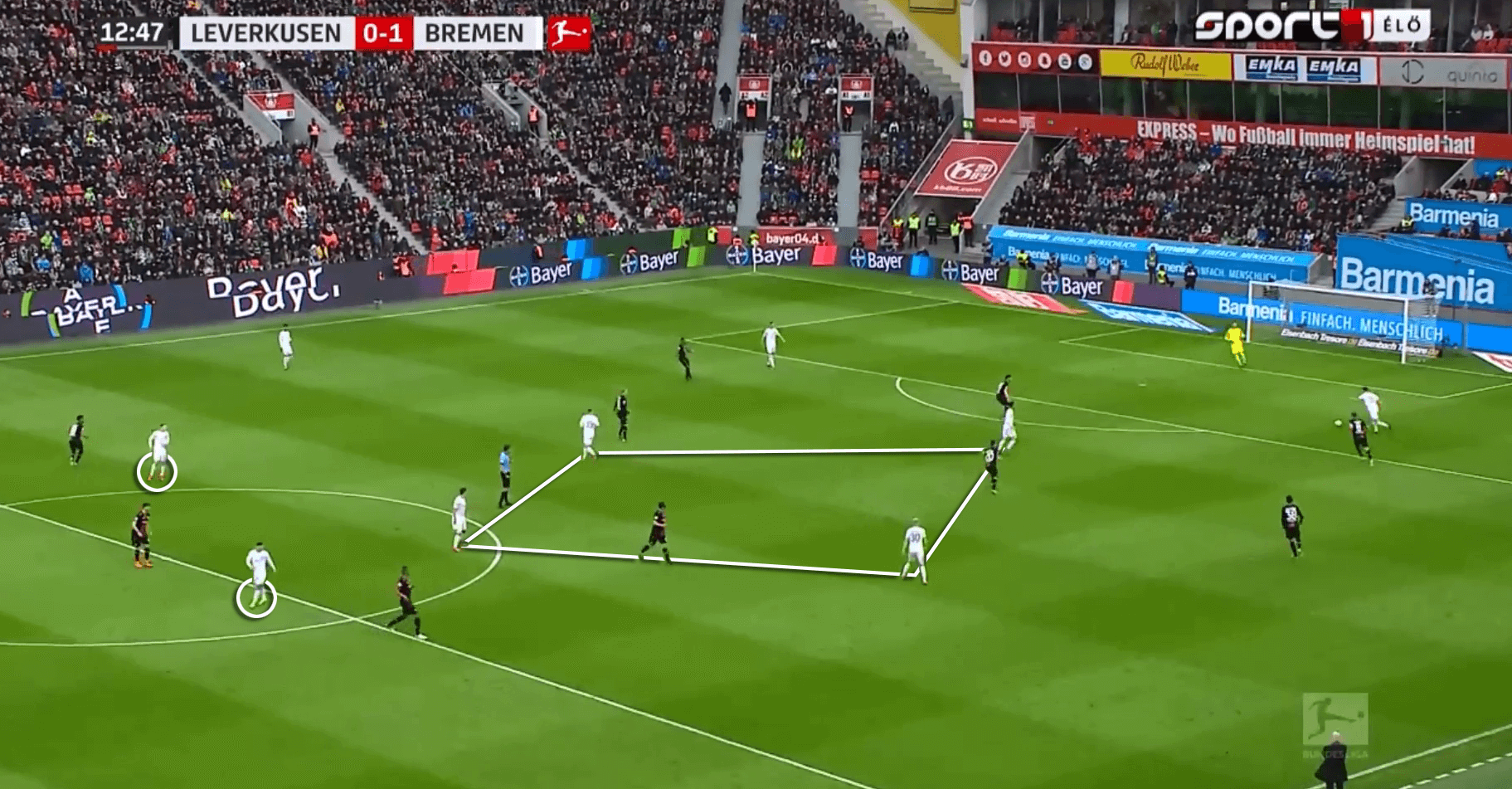
Kohfeldt’s defensive concepts
In the opposition half, Werder press their opponents in a man-oriented way. As more space needs to be defended when pressing high up the pitch, Kohfeldt prefers a rather man-oriented approach than a ball-oriented strategy. That means that Werder attempt to create one-on-one situations to press the opposition as in the situation below.
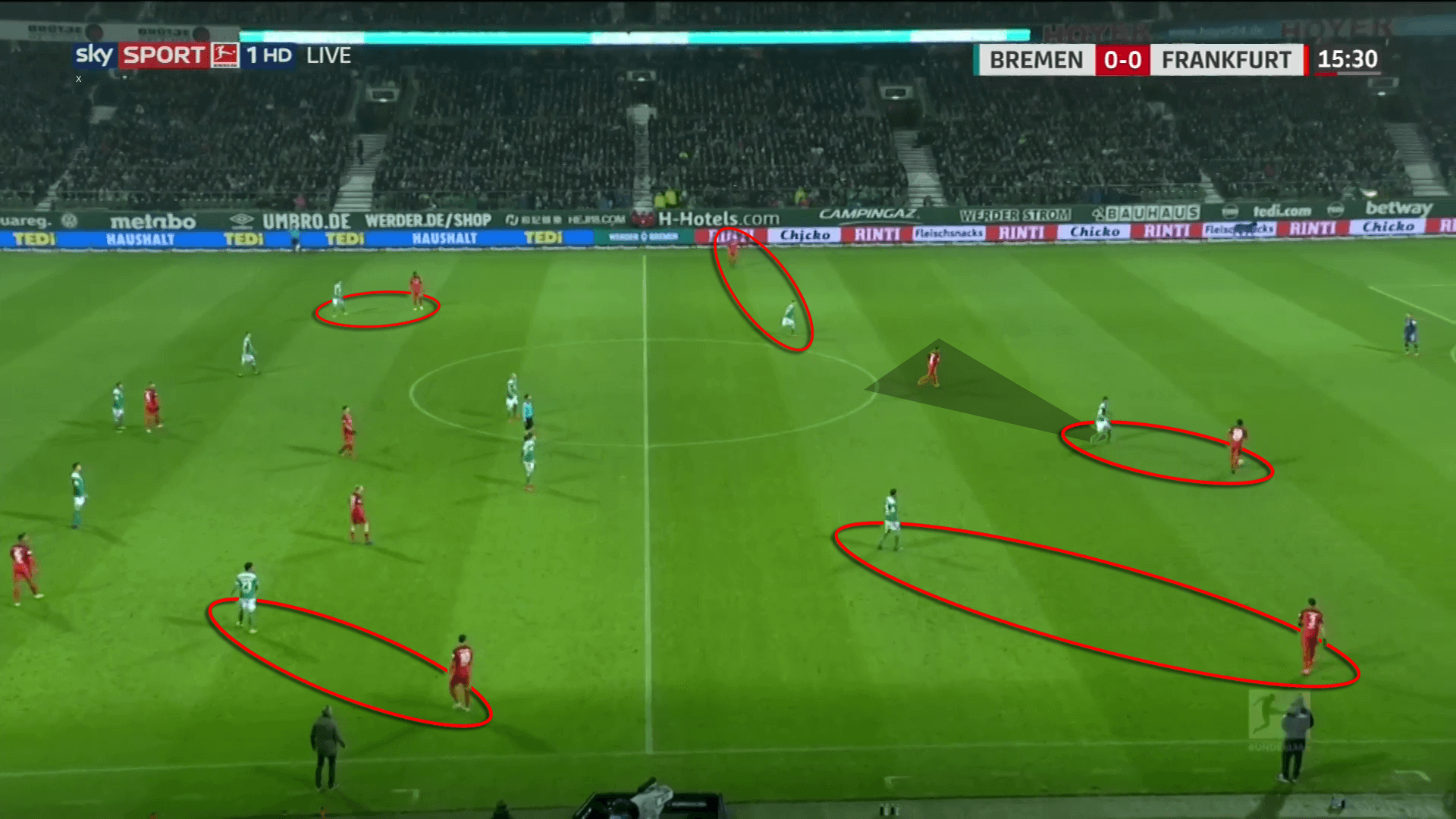
However, Werder successfully fall back into a lower block whenever they are unable to press. This can have different reasons. Either their midfield is overplayed, or they do not have enough players up front.
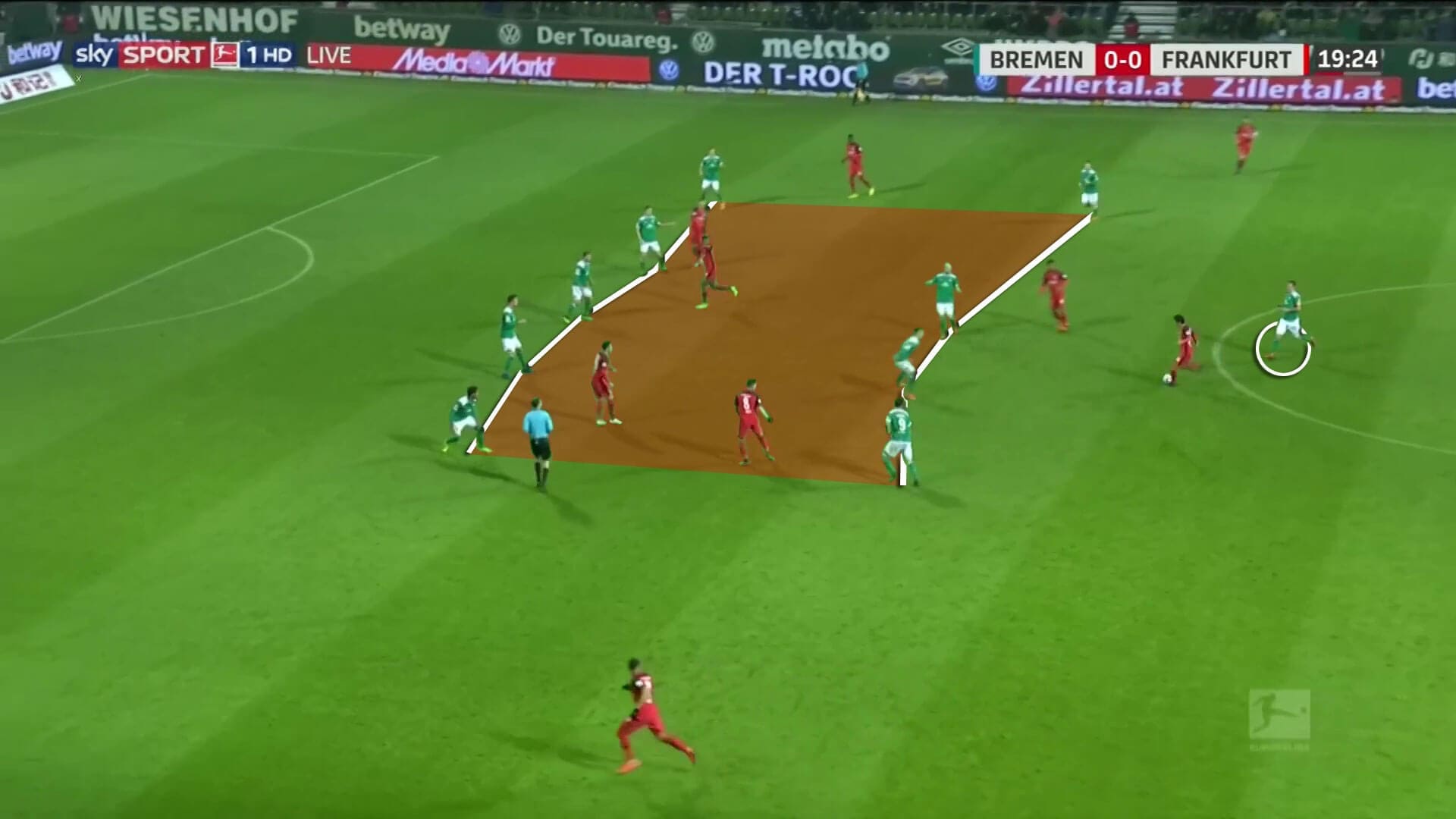
In both situations, Kohfeldt’s side drop to secure their own goal. Defending in their own half, Werder use a rather ball and space-oriented defending approach and attempt to keep space as small as possible with a compact shape.
Overloads and counter-movements
Through the usage of heavy overloads and counter-movements, Bremen try to penetrate the opposition defence. With off-the-ball movement, they can cause the opposition damage as their opponents struggle to get into duels.
Kohfeldt wants his attacking department to use counter-movements. Werder are thus able to create and occupy space between the lines since opposition defenders will need to react on the movement of Bremen’s attackers.
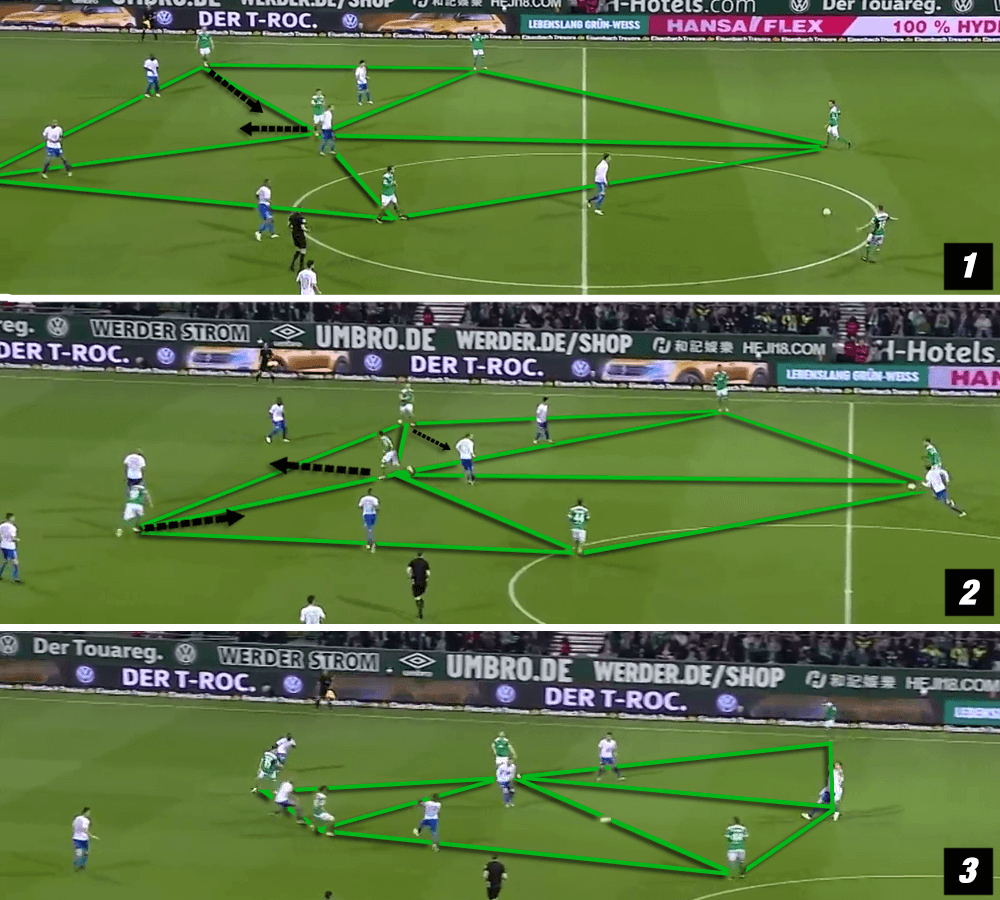
Werder use overloads in certain areas of the pitch. The creation of overloads results in two main attacking strategies. On the one hand, the players might be able to use a numerical superiority and combine through this area.
On the other hand, Bremen can attack down the flanks if the opposition outnumber Werder near the ball. With the help of overlapping runs of their full-backs, Werder are capable of playing around the block.
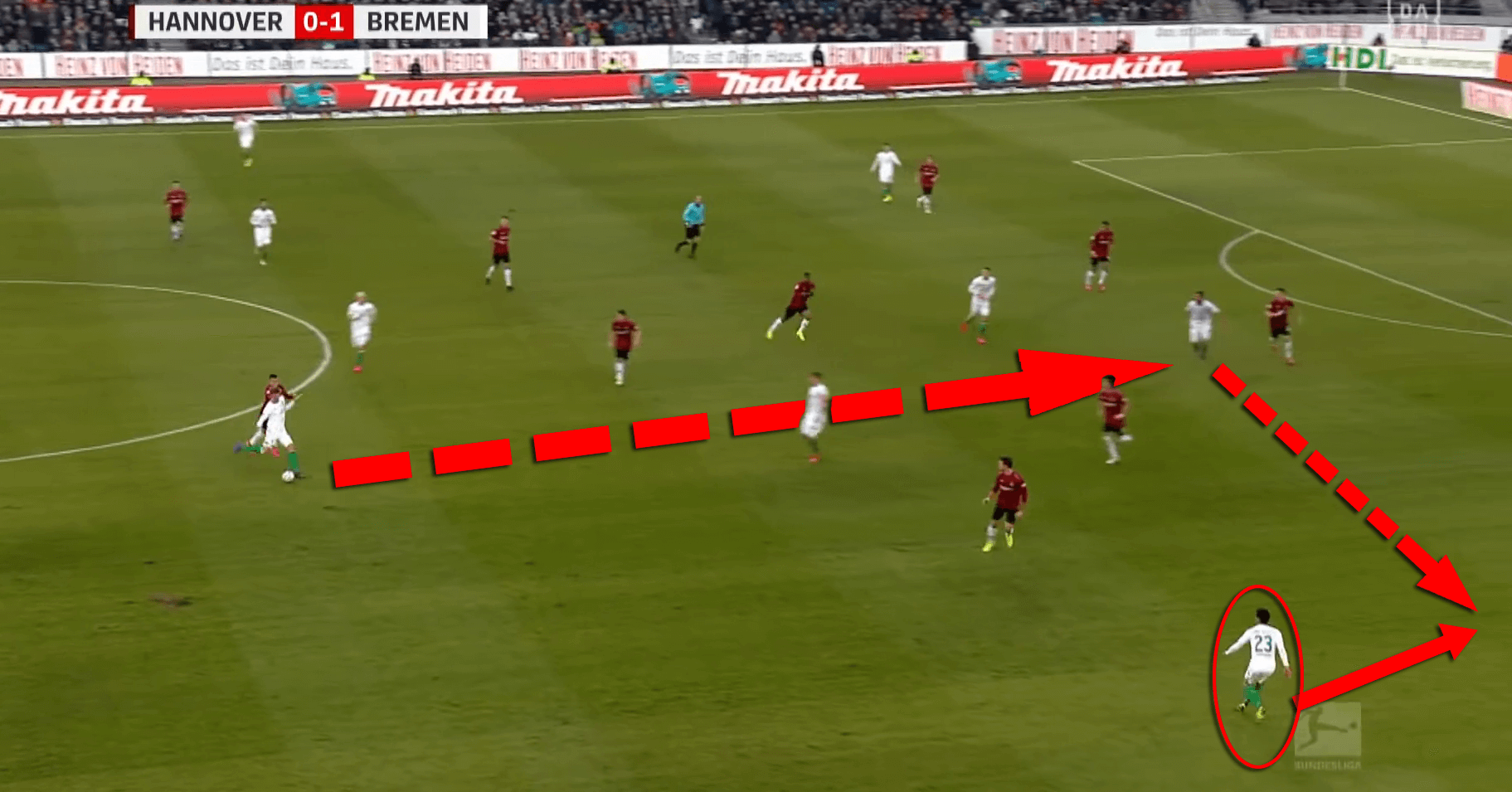
Last but not least, Kohfeldt wants his side to regularly switch play. After overloading one side of the pitch, Werder can then break through on the other side of the pitch.
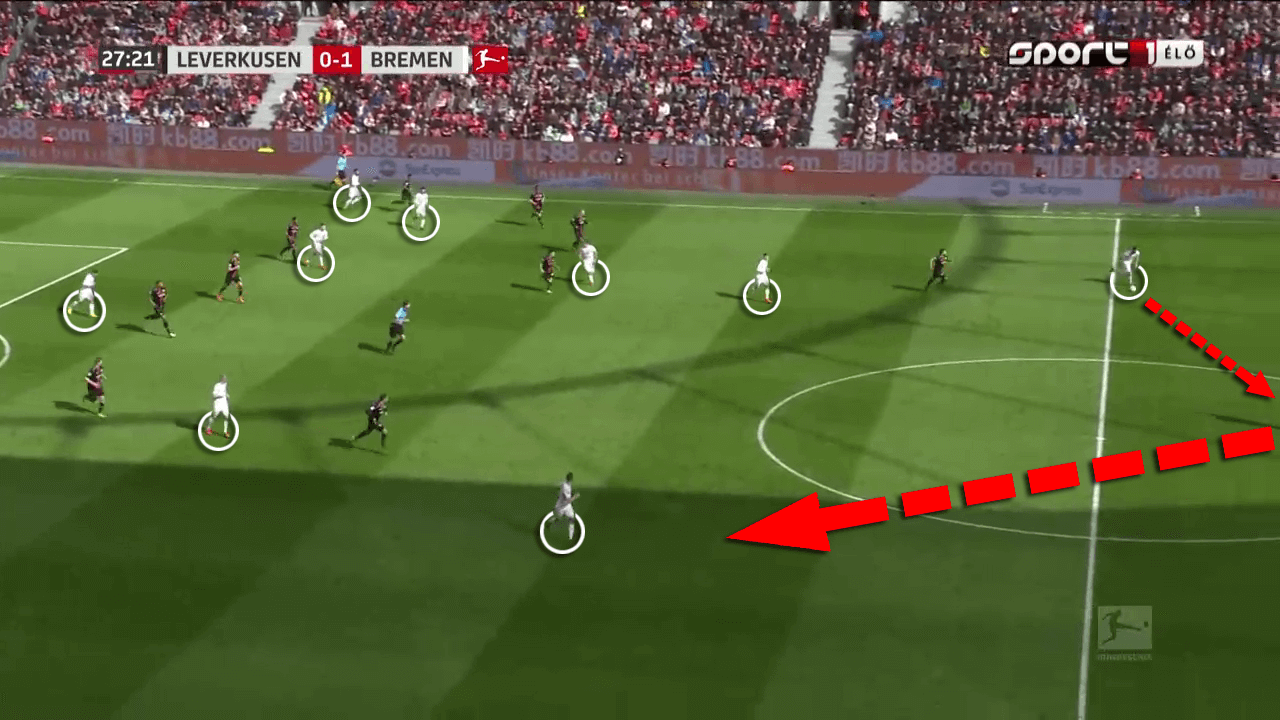
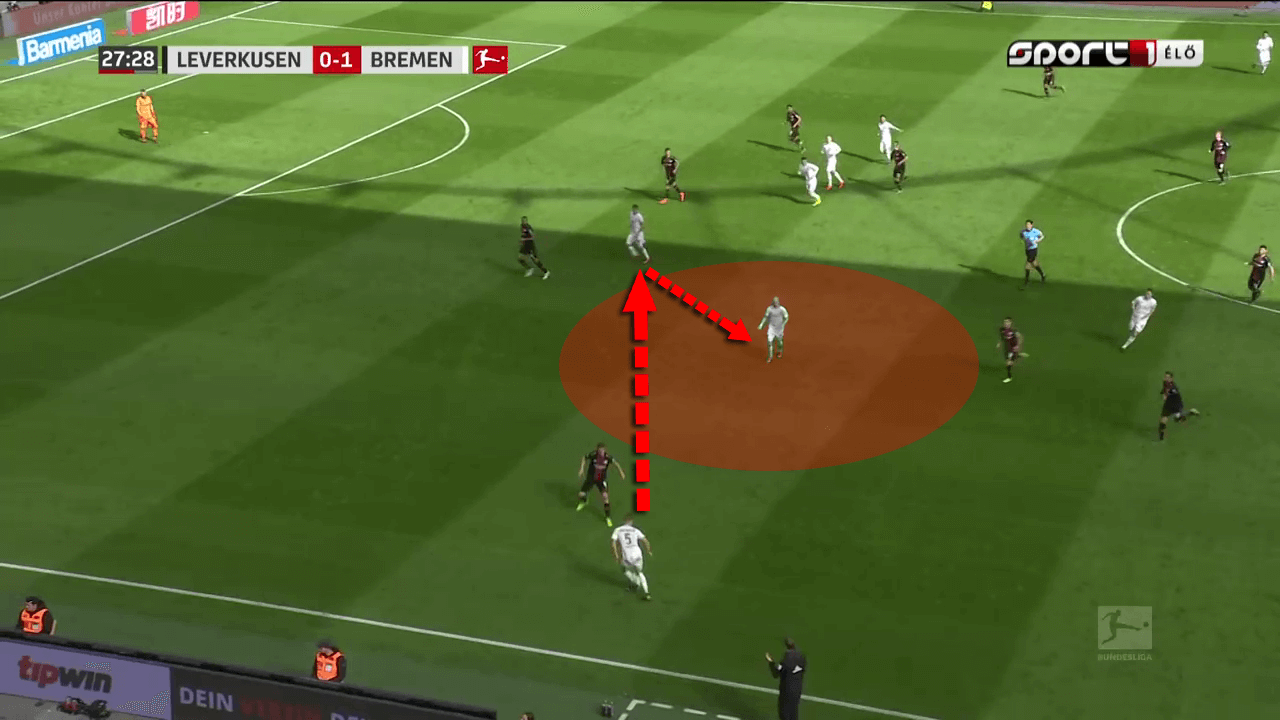
Crosses to create chances
Once Werder have progressed up the pitch, Kohfeldt’s side use crosses as one of their key elements to create goalscoring opportunities.
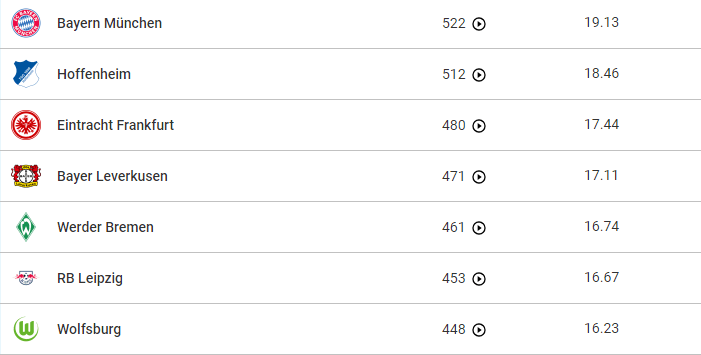
One of their players who often puts in crosses is Max Kruse. The playmaker likes to drift towards the left wing as the heat map below proves.
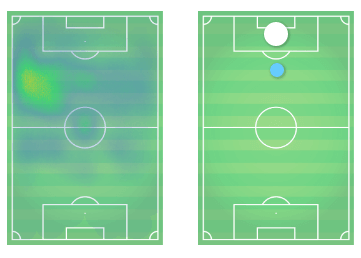
This allows the former German international to put in crosses with his strong left foot.
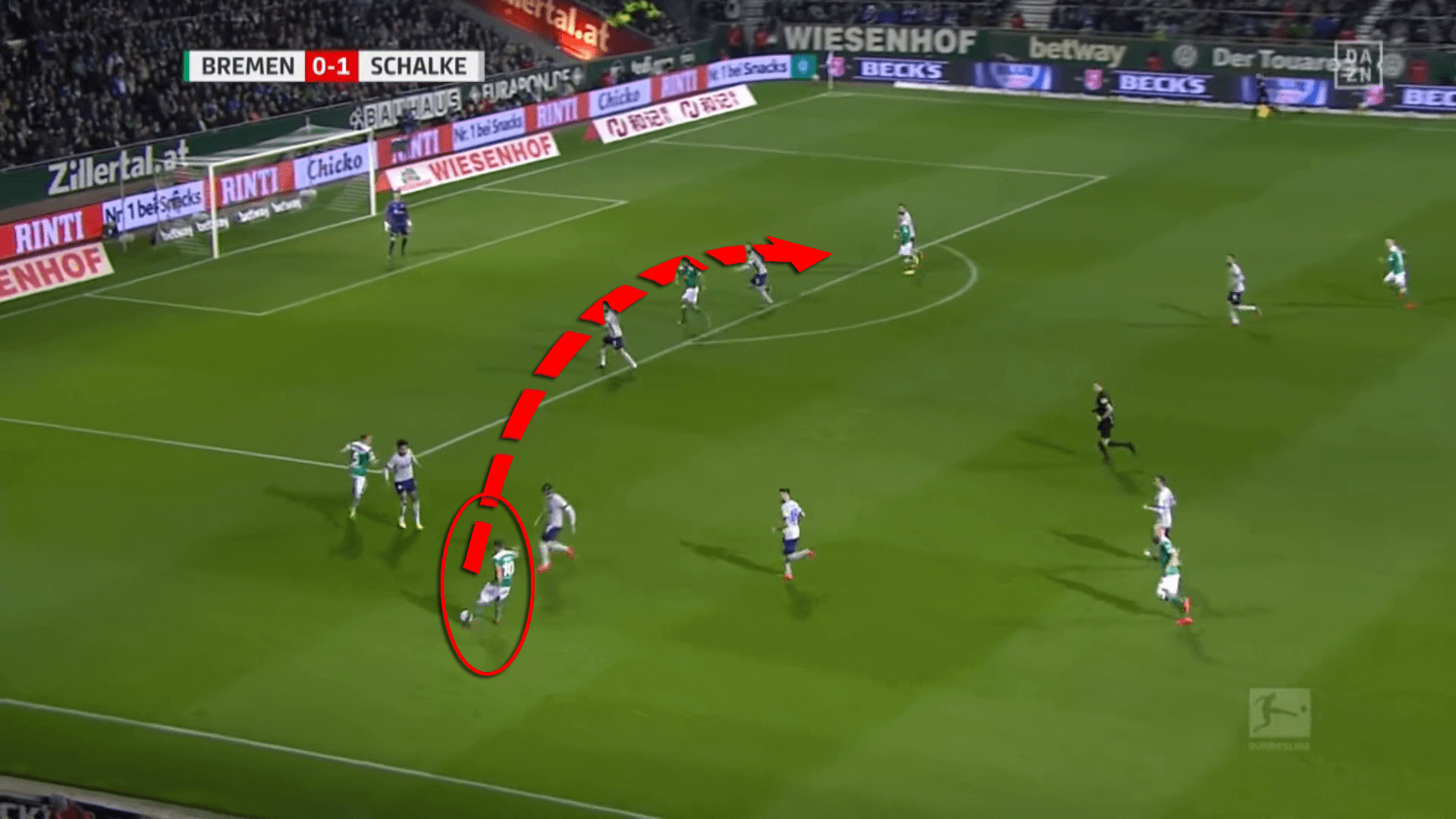
Contrary to other Bundesliga sides, Werder have a big variety in crosses which makes them unpredictable. As Werder’s attackers differ in their skill set, Bremen can make use of different strengths. When their strikers are strong in aerial duels, they put in crosses to finish with headers as one can see below.
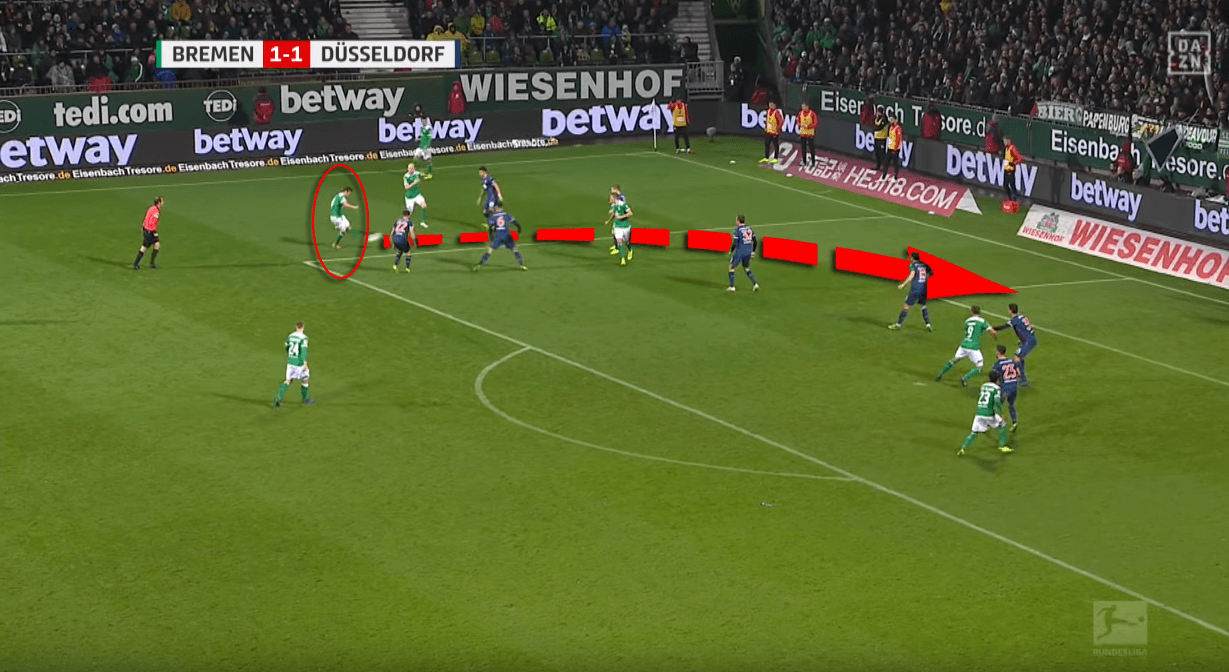
But Bremen can also play crosses behind the opposition back line.
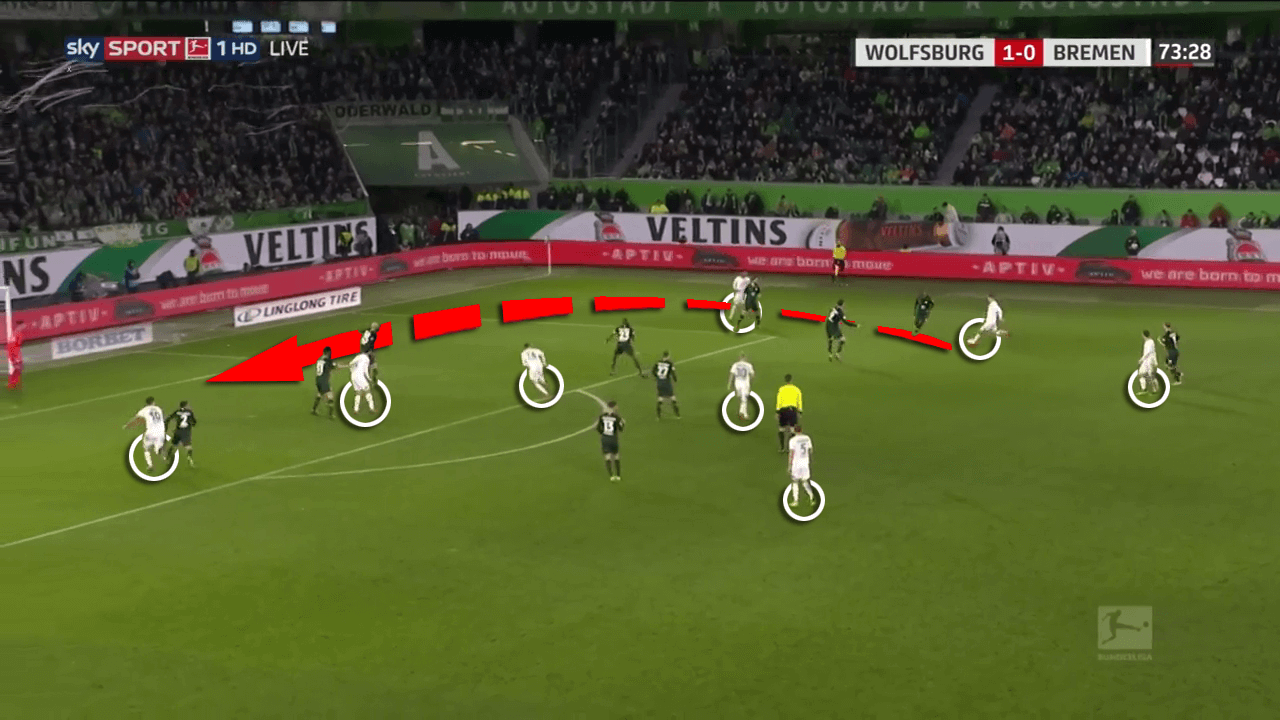
Last but not least, Bremen always position at least one advanced midfielder at the edge of the penalty area. This offers the additional opportunity to play back passes from the byline. In Maximilian Eggestein and Davy Klaassen, Bremen have players who can take dangerous shots from distance.
Transition moments
But Kohfeldt also lays much emphasis on the transition phases. As most sides with high possession rates, Werder (52,2%) execute counter-pressing after losing the ball under the reigns of their young manager. Similar to their high press, Bremen attempt to shut down every single opponent and thereby attempt to force the opposition to play long balls or even win possession in duels.
Furthermore, Kohfeldt wants his defenders to nip any counter-attack of the opposition in the bud. Therefore, the German coach uses clear behavioural patterns for his defenders. For instance, the wide players of the back-three are supposed to stay close to the opposition wingers during the attacking phase. This should enable Werder’s defenders to prevent opposition wide players from creating chances from counter-attacks.
Werder have also scored four goals from counter-attacks. However, as many of Bremen’s players lack pace, Werder execute a different counter-attacking strategy than most teams. They use short passes to attract opposition players and open up space.
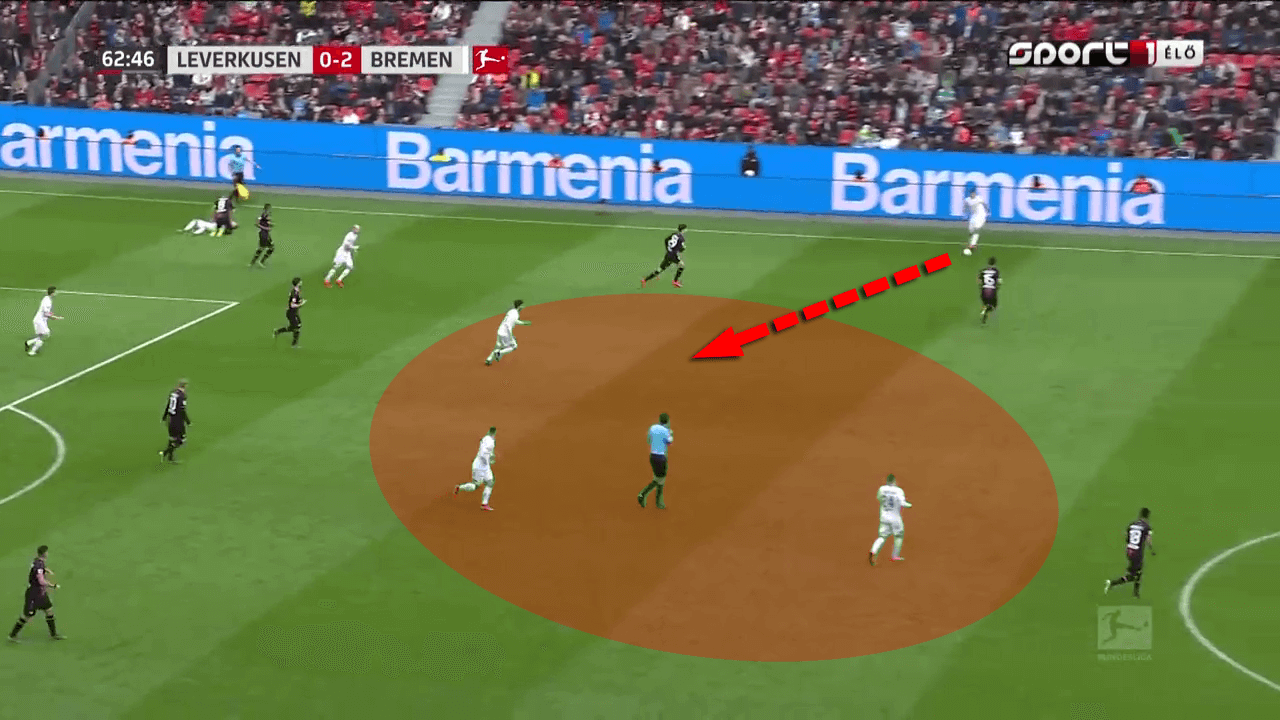
Once their opponent has offered space, Werder utilise their midfield superiority to progress up the pitch. Although most of their counter-attacks do not seem fast, Werder perfectly penalise the opposition for opening up gaps.
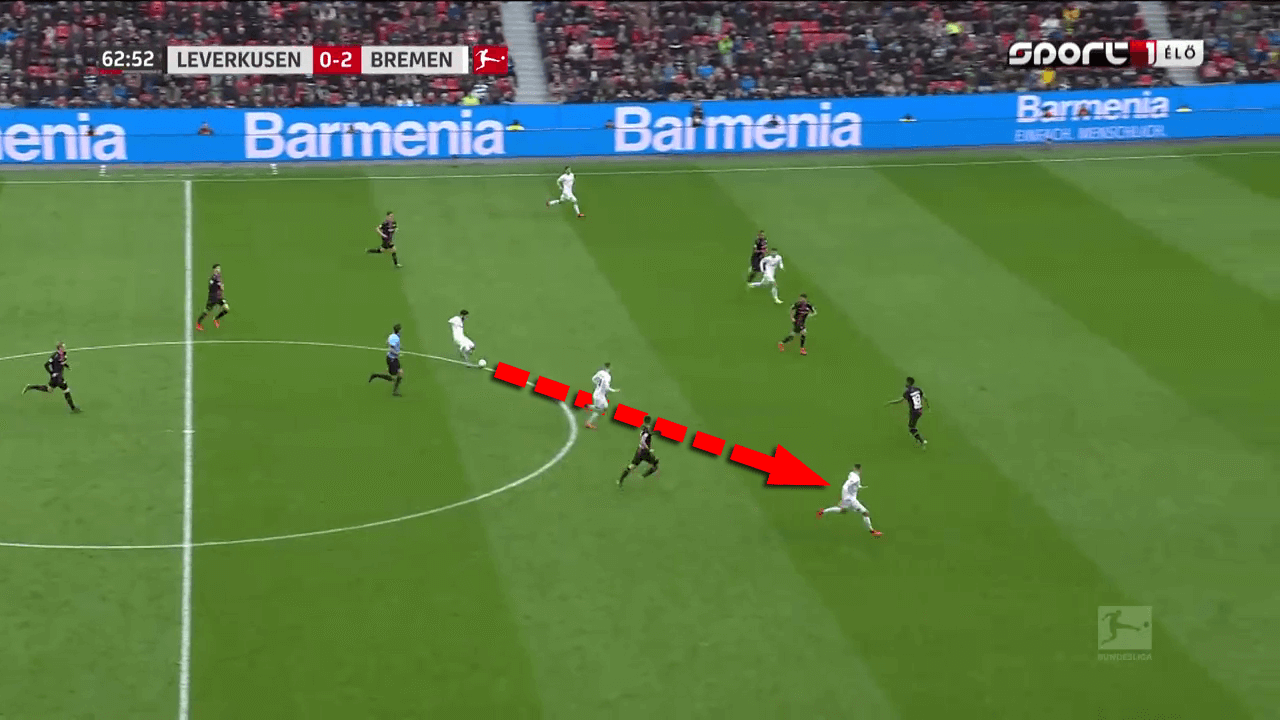
Conclusion
Florian Kohfeldt definitely belongs to a small group of very talented coaches in the Bundesliga who might be interesting for European top clubs. However, it is also imaginable that he’ll stay in Bremen for a long time to begin a new era comparable to that of Thomas Schaaf. No matter what, it is sure that Florian Kohfeldt will definitely be a name one should remember.
If you love tactical analysis, then you’ll love the digital magazines from totalfootballanalysis.com – a guaranteed 100+ pages of pure tactical analysis covering topics from the Premier League, Serie A, La Liga, Bundesliga and many, many more. Buy your copy of the March issue for just ₤4.99 here, or even better sign up for a ₤50 annual membership (12 monthly issues plus the annual review) right here.

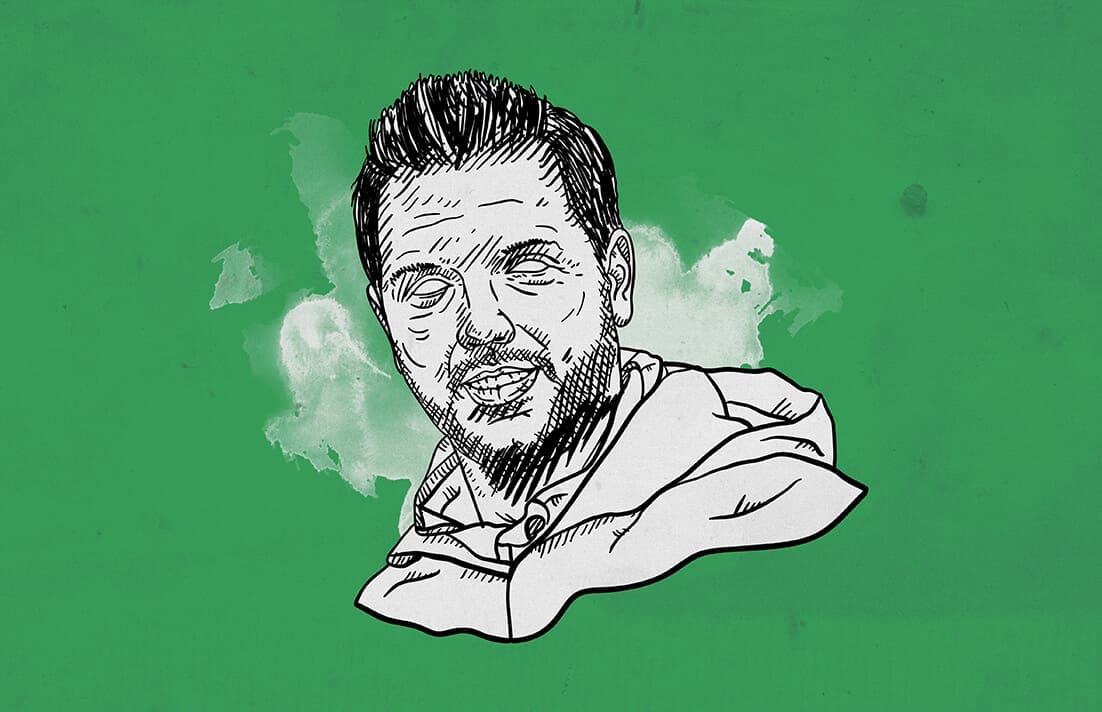



Comments